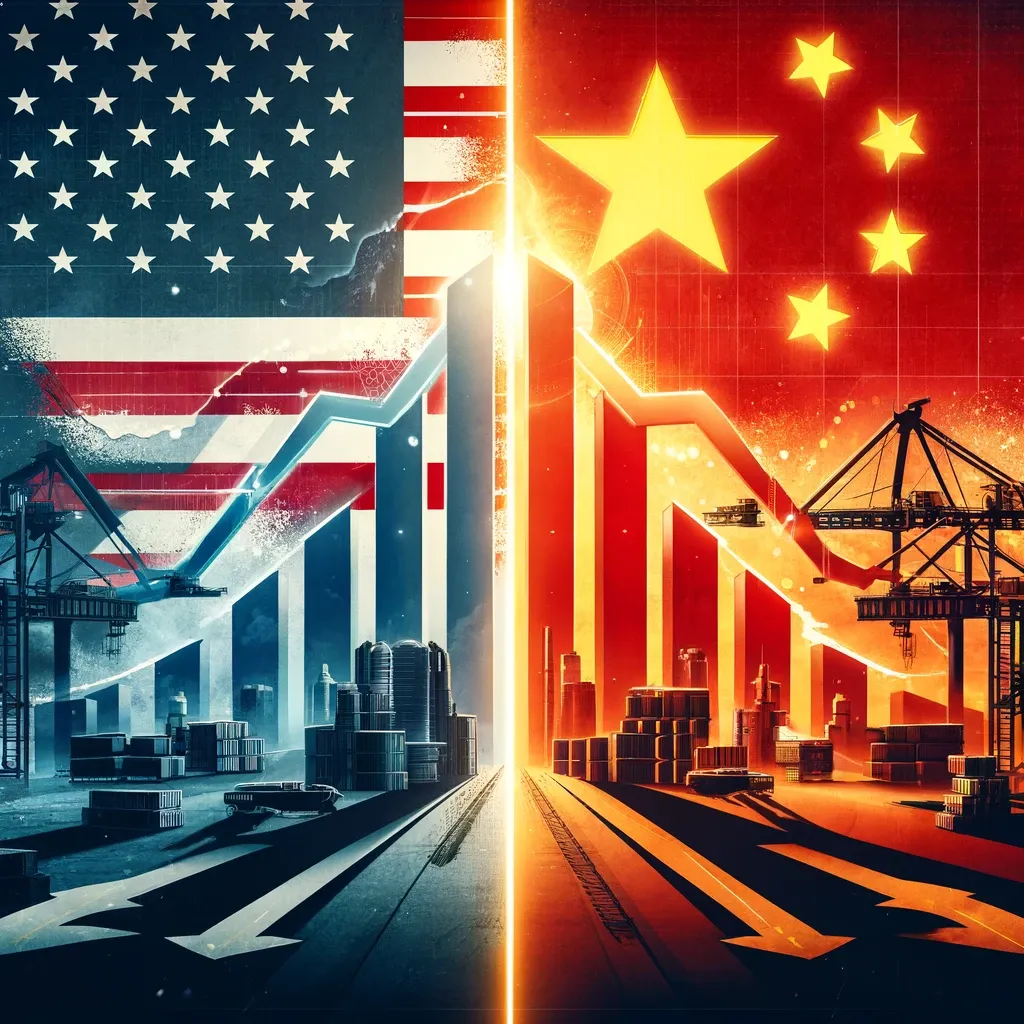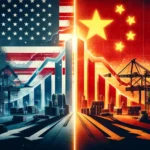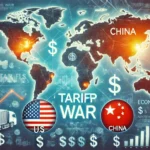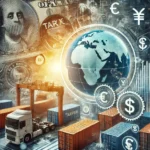Curious about how the US-China tariff war has affected global markets, industries, and consumers? Explore the profound consequences of the trade conflict between these two economic giants and what it means for the future.
The US-China tariff war has been one of the most defining global economic conflicts of the past few years. With both countries imposing tariffs on each other’s goods, the impact has been felt worldwide, influencing everything from manufacturing and agriculture to global trade relations. In this article, we will delve into the key aspects of the tariff war, exploring how it began, the consequences it has had, and what the future might hold for global trade dynamics.
US-China Trade War Tariff: A Brief Overview
The US-China trade war tariff began in 2018 when the United States, under President Donald Trump, initiated tariffs on Chinese imports as a way to address what the US saw as unfair trade practices by China, including intellectual property theft, forced technology transfers, and trade imbalances. In retaliation, China imposed its own tariffs on American goods, creating a back-and-forth cycle of escalating tariffs that impacted numerous industries in both countries.
The core of this tariff battle involved:
-
Tariff Rates: Both countries imposed tariffs ranging from 10% to 25% on hundreds of billions of dollars’ worth of goods.
-
Trade Imbalance: The US was particularly concerned with its massive trade deficit with China, which was over $300 billion in 2018.
-
Intellectual Property: A significant issue was China’s handling of intellectual property rights, which the US claimed were not adequately protected.
-
Manufacturing Shifts: Many US companies that relied on Chinese manufacturing faced higher production costs due to the tariffs, prompting some to shift production elsewhere.
As tariffs were implemented, both economies started to feel the strain, but perhaps the most significant impacts were seen in global supply chains and the industries directly affected by these tariffs, such as electronics, machinery, and agriculture.
Key Impacts:
-
Higher Prices for Consumers: As tariffs increased the cost of imports, consumers in both countries faced higher prices on goods, particularly electronics and agricultural products.
-
Shifts in Global Supply Chains: Manufacturers and suppliers scrambled to find new countries to source materials and products from, leading to a restructuring of global supply chains.
-
Economic Slowdown: Both the US and China saw economic slowdowns due to the tariffs, with growth rates dipping as businesses adjusted to the new trade environment.
-
Agricultural Struggles: US farmers were particularly hard-hit by China’s retaliatory tariffs on agricultural goods, leading to significant losses and even government bailouts for affected industries.
To learn more about the specifics of how tariffs affected global industries, click the button below:
👉 Learn more about global market impacts 👈
US-China Tariffs: Escalation and De-escalation
As the trade war progressed, the US-China tariffs continued to escalate, with both countries imposing additional tariffs on a broader range of products. However, by January 2020, the two nations reached a partial agreement with the Phase One trade deal, which helped ease some of the tension.
Key elements of the Phase One deal included:
-
Tariff Reductions: The US agreed to reduce tariffs on some Chinese products, while China pledged to buy more US goods, including agricultural products.
-
Intellectual Property Protections: The agreement also included provisions aimed at addressing concerns over intellectual property theft, technology transfers, and market access.
-
Enforcement Mechanisms: A key feature was the inclusion of mechanisms to enforce the terms of the agreement, offering both sides a way to hold each other accountable.
Despite this partial resolution, many of the tariffs imposed earlier remained in place, and the full impact of the deal was yet to be seen.
Ongoing Tensions:
-
Geopolitical Impact: The tariffs strained not only US-China relations but also affected global political dynamics, with many countries finding themselves caught in the middle of the economic conflict.
-
Technological Competition: The trade war also led to increased competition in the technology sector, particularly in the areas of 5G and artificial intelligence, where China and the US are the two leading players.
-
Consumer Behavior Changes: As prices for certain goods increased, consumers began seeking alternatives, affecting the retail and e-commerce sectors.
These ongoing tensions have left many wondering about the long-term trajectory of US-China trade relations. Could further escalation happen? Or will the tariffs be gradually reduced?
👉 Explore more about Phase One of the trade deal 👈
Closing US-China Tariffs: What the Future Holds
The future of closing US-China tariffs remains uncertain. While there has been talk of further de-escalation, including potential tariff reductions and easing of trade restrictions, there are several challenges to achieving a permanent resolution.
Future Challenges:
-
Political Factors: The ongoing political rivalry between the US and China makes it difficult to fully resolve trade disputes. Domestic politics, including upcoming US elections, can influence the direction of trade policy.
-
Global Economic Trends: The global economic landscape is constantly evolving, with factors like the COVID-19 pandemic, supply chain disruptions, and emerging markets playing a significant role in shaping future trade policies.
-
China’s Role in Global Trade: China’s growing influence in global trade and its push for technological innovation will likely remain a source of tension, especially in industries like semiconductors and artificial intelligence.
Some experts predict that even with eventual tariff reductions, the US-China relationship will remain competitive, with each country vying for dominance in key industries. The future of tariffs, in this case, could look like a slow thawing rather than a full resolution.
Possible Outcomes:
-
Phase Two Agreements: There may be continued efforts to negotiate further agreements that could reduce tariffs and address other areas of trade conflict.
-
Long-term Trade Partnerships: Both countries may eventually move towards long-term, more stable trade partnerships, but the future remains uncertain.
To explore potential strategies for closing tariffs and moving toward cooperation, click the button below:
👉 Discover strategies for closing US-China tariffs 👈
Conclusion
The US-China tariff war has had lasting effects on the global economy, reshaping industries and altering trade dynamics across the world. While some progress has been made with the Phase One agreement, the long-term impact of these tariffs is far from over. As both nations continue to navigate this complex and evolving relationship, the question remains: will the tariffs eventually close, or will we see a continuation of this economic standoff? Only time will tell, but one thing is certain: the ripple effects of this trade war will be felt for years to come.






